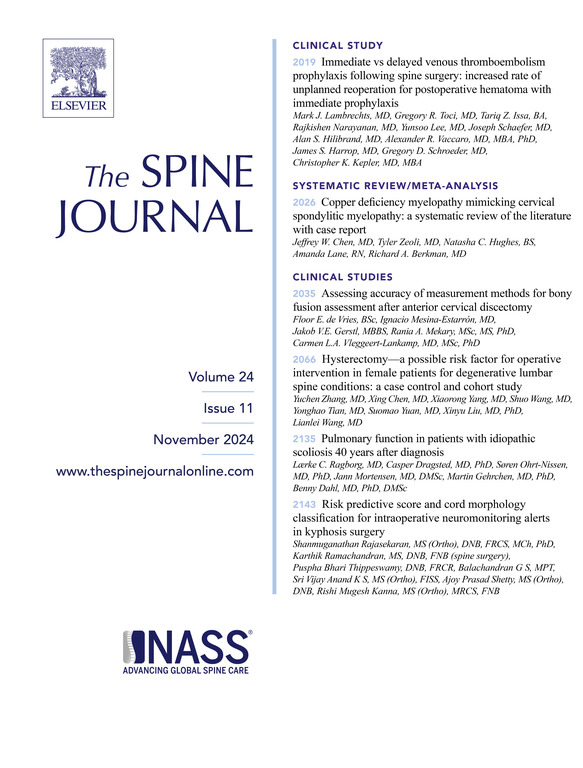骶髂炎:当前的成像方式和未来的方向。叙述性评论。
IF 4.9
1区 医学
Q1 CLINICAL NEUROLOGY
引用次数: 0
摘要
骶髂炎,或一个或两个骶髂关节(sij)的炎症,由于患者表现多样,缺乏高度敏感和特异性的诊断方法,很难与其他原因的下背部和臀部疼痛区分开来。虽然体格检查、激发试验和SIJ阻滞试验提供了信息,但通常需要确认性影像学检查来提高诊断的准确性。放射照相和磁共振成像(MRI)是最流行的成像研究,但其他方式,如计算机断层扫描(CT)、单光子发射计算机断层扫描(SPECT)/CT、正电子发射断层扫描(PET)/CT和超声检查正在成为可行的替代方案。本文综述了骶髂炎的历史、临床应用和各种影像学诊断方法的局限性。图像采集和分析的新技术,如数字断层合成(DT),体积插值屏气检查(VIBE) MRI和双能CT (DECT)也进行了讨论。本文章由计算机程序翻译,如有差异,请以英文原文为准。
Sacroiliitis: current imaging modalities and future directions: a narrative review
Sacroiliitis, or inflammation of one or both of the sacroiliac joints (SIJs), can be difficult to distinguish from other etiologies of lower back and buttock pain due to diverse patient presentations and a lack of highly sensitive and specific diagnostic modalities. Although physical examination, provocation tests, and an SIJ block test are informative, confirmatory imaging is often required to improve diagnostic accuracy. Radiography and magnetic resonance imaging (MRI) are the most popular imaging studies for this purpose, but other modalities such as computed tomography (CT), single-photon emission computed tomography (SPECT)/CT, positron emission tomography (PET)/CT, and ultrasonography are emerging as viable alternatives. This narrative review provides a comprehensive summary of the history, clinical use and limitations of each imaging modality in the diagnosis of sacroiliitis. Novel techniques in image acquisition and analysis, such as digital tomosynthesis (DT), volumetric interpolated breath-hold examination (VIBE) MRI and dual energy CT (DECT) are also discussed.
求助全文
通过发布文献求助,成功后即可免费获取论文全文。
去求助
来源期刊

Spine Journal
医学-临床神经学
CiteScore
8.20
自引率
6.70%
发文量
680
审稿时长
13.1 weeks
期刊介绍:
The Spine Journal, the official journal of the North American Spine Society, is an international and multidisciplinary journal that publishes original, peer-reviewed articles on research and treatment related to the spine and spine care, including basic science and clinical investigations. It is a condition of publication that manuscripts submitted to The Spine Journal have not been published, and will not be simultaneously submitted or published elsewhere. The Spine Journal also publishes major reviews of specific topics by acknowledged authorities, technical notes, teaching editorials, and other special features, Letters to the Editor-in-Chief are encouraged.
 求助内容:
求助内容: 应助结果提醒方式:
应助结果提醒方式:


